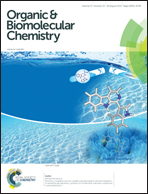1,3-Dipolar cycloadditions of azomethine imines
Abstract
Azomethine imines are considered 1,3-dipoles of the aza-allyl type which are transient intermediates and should be generated in situ but can also be stable and isolable compounds. They react with electron-rich and electron-poor olefins as well as with acetylenic compounds and allenoates mainly by a [3 + 2] cycloaddition but they can also take part in [3 + 3], [4 + 3], [3 + 2 + 2] and [5 + 3] with different dipolarophiles. These 1,3-dipolar cycloadditions (1,3-DC) can be performed not only under thermal or microwave conditions but also using metallo- and organocatalytic systems. In recent years enantiocatalyzed 1,3-dipolar cycloadditions have been extensively considered and applied to the synthesis of a great variety of dinitrogenated heterocycles with biological activity. Acyclic azomethine imines derived from mono and disubstituted hydrazones could be generated by prototropy under heating or by using Lewis or Brønsted acids to give, after [3 + 2] cycloadditions, pyrazolidines and pyrazolines. Cyclic azomethine imines, incorporating a C–N bond in a ring, such as isoquinolinium imides are the most widely used dipoles in normal and inverse-electron demand 1,3-DC allowing the synthesis of tetrahydro-, dihydro- and unsaturated pyrazolo[1,5-a]isoquinolines in racemic and enantioenriched forms with interesting biological activity. Pyridinium and quinolinium imides give the corresponding pyrazolopyridines and indazolo[3,2-a]isoquinolines, respectively. In the case of cyclic azomethine imines with an N–N bond incorporated into a ring, N-alkylidene-3-oxo-pyrazolidinium ylides are the most popular stable and isolated dipoles able to form dinitrogen-fused saturated and unsaturated pyrazolopyrazolones as racemic or enantiomerically enriched compounds present in many pharmaceuticals, agrochemicals and other useful chemicals.


 Please wait while we load your content...
Please wait while we load your content...